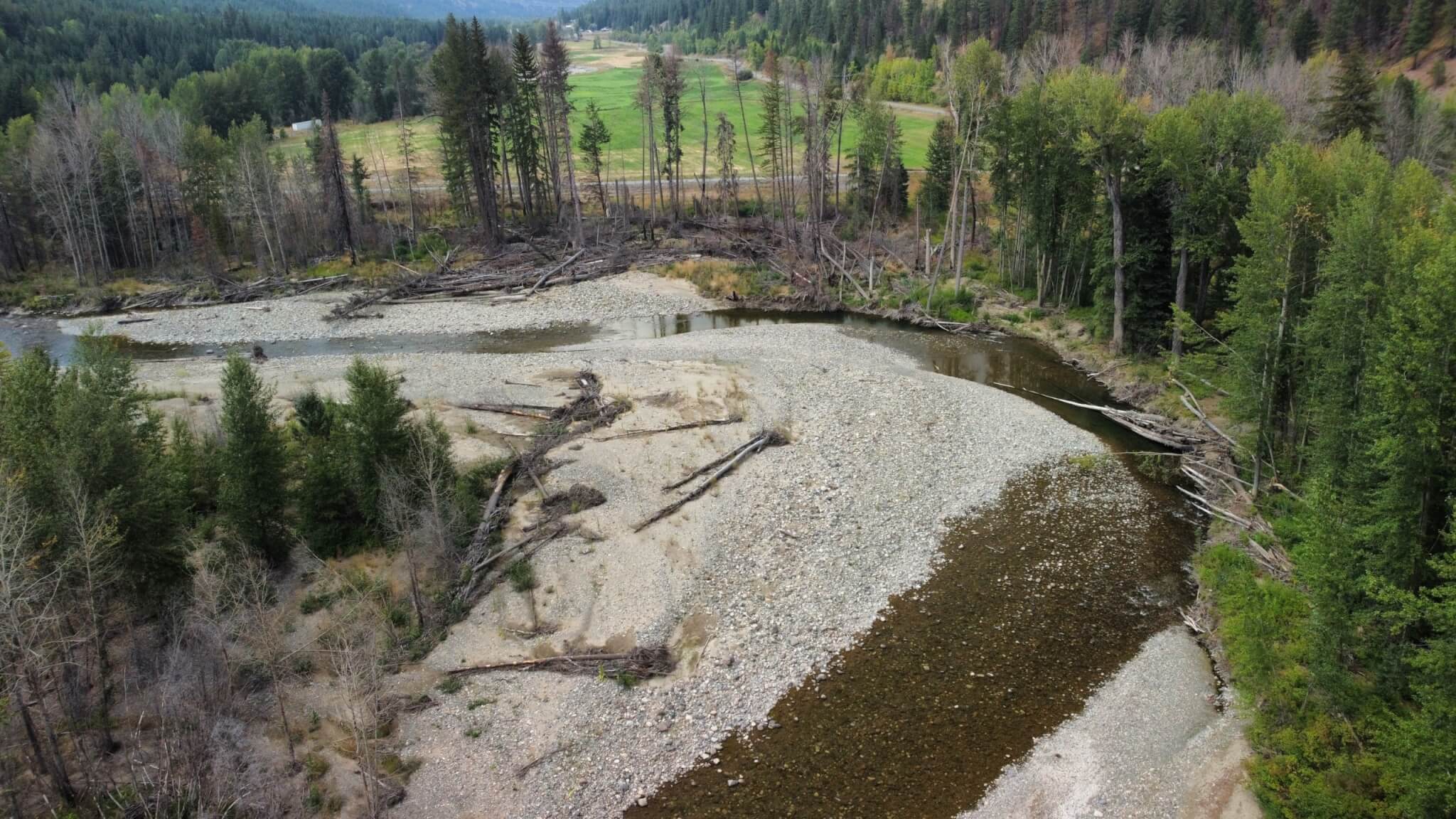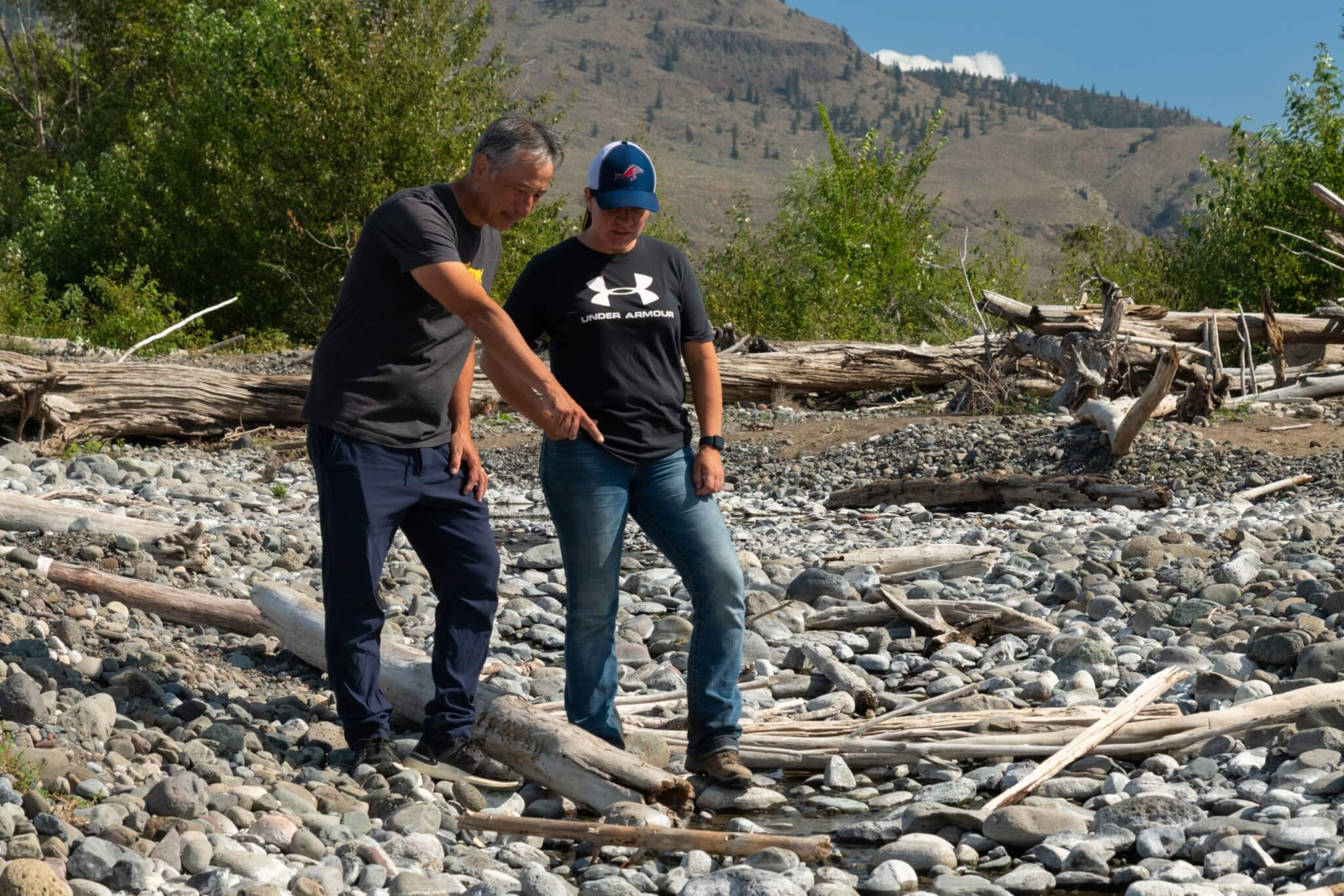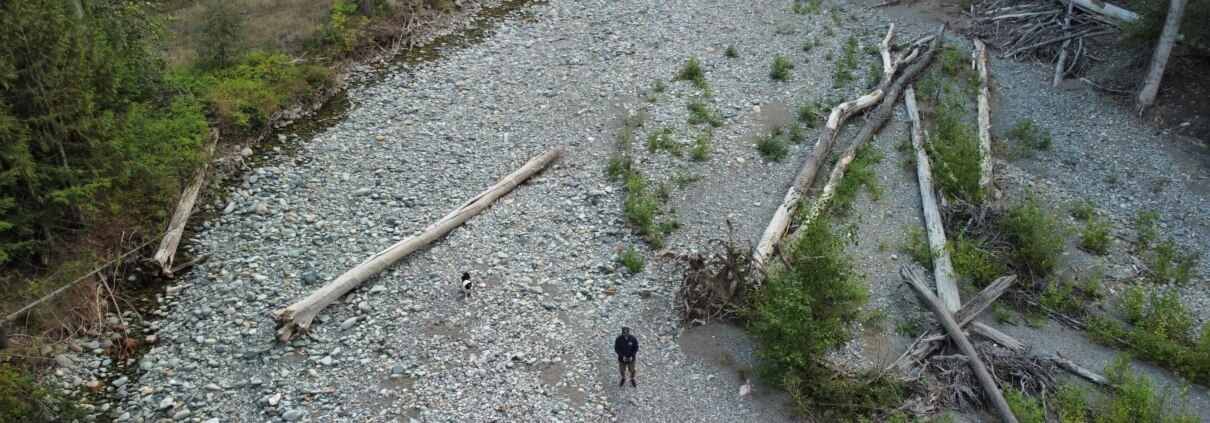URGENT ACTION UNDERWAY FOR SALMON STRUGGLING AMIDST DROUGHT
Sept. 07, 2023
The Pacific Salmon Foundation has activated time-sensitive pilot projects across the province, from B.C.’s interior watersheds to Vancouver Island streams to help salmon as they struggle to survive in the face of extreme drought conditions.
British Columbia is experiencing one of the most extreme periods of drought in recorded history. As of Aug. 24, 19 regions in B.C. are at Level Five Drought, the highest possible rating where adverse effects are almost certain to occur.
Parched streams and side channels along rivers are quickly becoming unviable habitats for returning adult salmon and juveniles, putting salmon survival and reproductive success in jeopardy.
Early indications of severe drought conditions prompted the Pacific Salmon Foundation (PSF) to convene a working group with the Province of B.C., the Department of Fisheries and Oceans Canada (DFO), and technical experts with the goal of identifying and activating innovative solutions to help both juvenile salmon and returning adult spawners survive the extreme, unfavourable conditions.
“We are looking at strategies that are brand new and may seem unconventional, but we’ve also never seen drought conditions of this severity. Standing by and doing nothing is not an option.” Jason Hwang, VP for Salmon, PSF.
With funding support from the Province of B.C. kickstarting a Climate Adaptation fund at PSF, the collaborative rapid response working group has approved $76,000 to activate four projects in B.C. to help combat the adverse impacts of climate change on salmon. The project locations and collaborators are as follows:
- The Coldwater River near Merritt led by Scw’exmx Tribal Council and DFO
- The Simpcw (Dunn Creek) Hatchery in the North Thompson watershed led by Simpcw First Nation
- Tranquille River near Kamloops led by DFO with support from Secwepemc Fisheries Commission
- The Tsolum River on Vancouver Island led by Tsolum River Restoration Society with support from K’omok’s First Nation and DFO
The breadth of these projects varies from digging dry gravel bars in the Coldwater at sites that support high densities of salmon to create cool groundwater refuge areas for fish, to narrowing channel width, thus increasing water depth, at Joseph Creek to ensure that salmon fry at Simpcw (Dunn Creek) Hatchery have enough water to migrate through.

A restoration site on the Coldwater River. (Jason Hwang)
In the Comox Valley, work is being planned to install solar- and generator-powered aerators in the Tsolum River to maximize salmon survival by increasing the dissolved oxygen levels, which are currently alarmingly low as a result of drought conditions.
This week, local partners are repairing dried up habitat the mouth of the Tranquille River by re-establishing water flows between Tranquille River and Kamloops Lake to enable salmon to migrate upstream to their spawning grounds just in time for their return.

Jason Hwang (PSF) and Sarah Ostoforoff (DFO) at the Tranquille River project site. (Peter Olsen)
QUOTES
“Past droughts in B.C. were isolated to specific areas and watersheds. But this year, drought is an everywhere problem. Even the wettest areas in B.C. are seeing dry and hot conditions. We are seeing significant impacts on salmon-bearing rivers and streams. Salmon returning to their freshwater habitats are facing these extreme drought stressors. It’s the equivalent of trying to run a marathon in a sauna.” – Jason Hwang, VP of Salmon, Pacific Salmon Foundation
“In response to severe drought conditions our government is investing in the protection of watersheds and streams that salmon rely on for migration and spawning. In the Kamloops area, we are working with the Secwepmec Fisheries Commission, the Department of Fisheries and Oceans and, the Pacific Salmon Foundation to re-establish water flow between the upper and lower sections of the river to enable salmon to migrate to their spawning grounds. Through our combined efforts, we can support this iconic species and allow for the recovery of the river’s aquatic ecosystem.” – Hon. Nathan Cullen, Minister of Water, Land, and Resource Stewardship
“British Columbia is experiencing historic drought conditions and the province is taking steps to protect the waterways salmon rely on for survival. In the North Thompson watershed, we are supporting an innovative project by the Simpcw First Nation to improve water flow in Joseph Creek in order to support up to 20,000 coho fry currently at the Simpcw (Dunn Creek) Hatchery. This work is critical for restoring the already at-risk Interior Fraser coho salmon.” – Hon. Nathan Cullen, Minister of Water, Land, and Resource Stewardship
“The Province of B.C. is supporting the Scw’exmx Tribal Council, Pacific Salmon Foundation and Fisheries and Oceans Canada in novel watershed restoration strategies during this summer of drought to help keep wild Pacific salmon alive and well. Their innovative approach, digging into select locations of the Coldwater River, makes it possible for returning adult coho and chinook salmon struggling to survive to find shelter and refuge in deep, cool groundwater pools.” – Fin Donnelly, Parliamentary Secretary for Watershed Restoration
“K’omok’s First Nation, Fisheries and Oceans Canada and the Tsolum River Restoration Society have embarked on a noteworthy and novel action plan to protect wild salmon in the Tsolum River, which is experiencing warmer conditions and low water levels from severe drought. Increasing oxygen levels for fish through aeration devices in refuge pools increases their chances of survival. The Province supports these measures through the Climate Adaptation Fund to the Pacific Salmon Foundation.” – Kelly Greene, Parliamentary Secretary for Fisheries and Aquaculture
MEDIA INQUIRIES
Please contact Braela at bkwan@psf.ca to arrange interviews or request more information.
Click here for photos available for press use.



